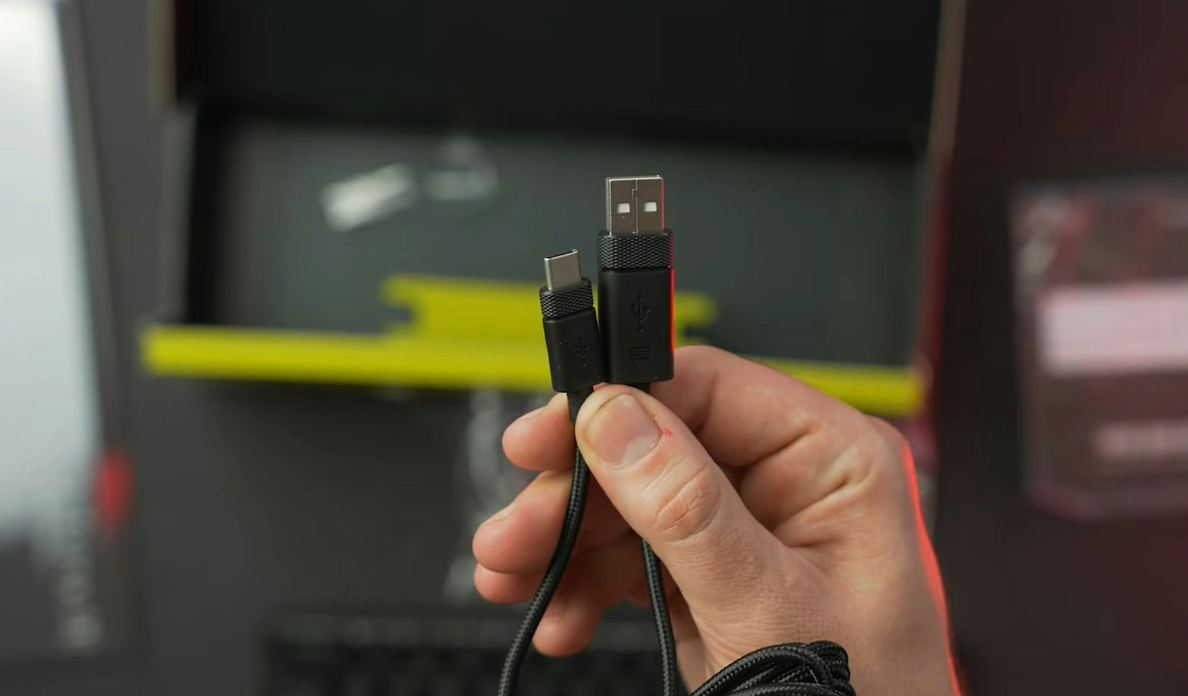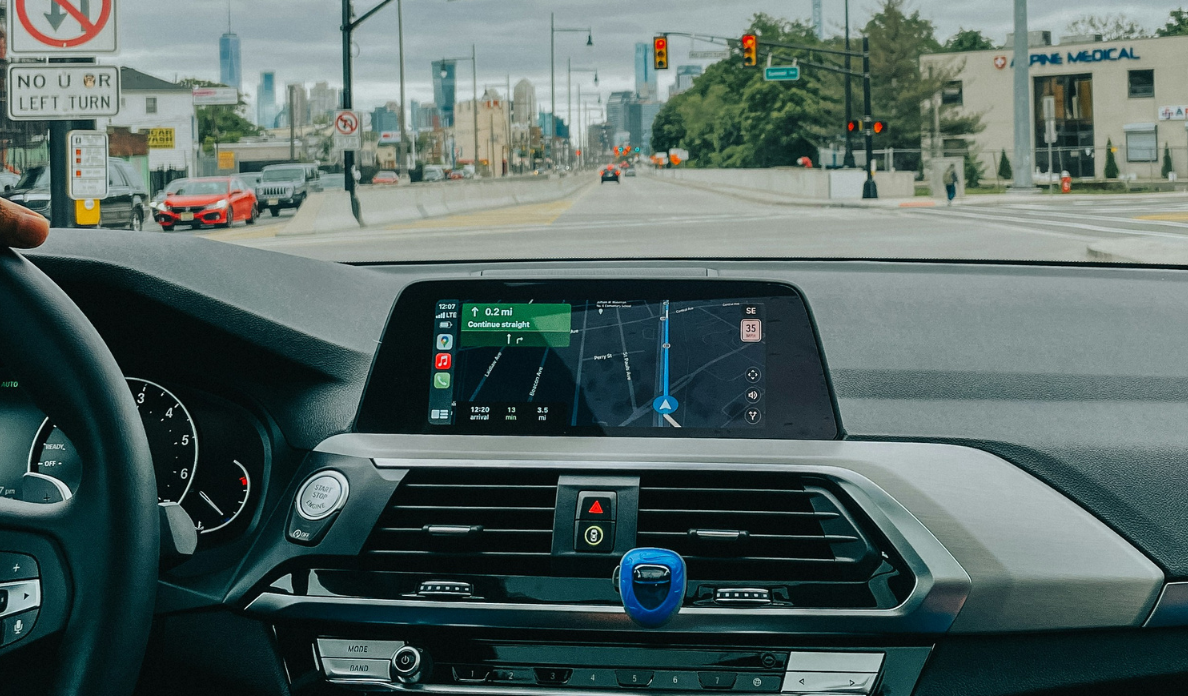Did you know that more than half of those with an Android plan to switch over to the iPhone 15 if it's USB C compatible? At this point, over 68% of smartphones across the globe are USB-C compatible. Due to the popularity of USB-C cables and the lasting familiarity with USB-A cables, consumers are wanting to learn more about USB C vs USB A.
These types of connections may look similar at first glance. However, both of them offer different capabilities and have different restrictions. Additionally, one of them might be on its way out of the door regarding its popularity.
The difference between the two has more factored into it than the device you're using and the shape of the port itself. With new equipment being manufactured every day to suit current market trends, it's important to know the difference between USB A and C.
Keep reading to get a better insight on how they're different if they have any similarities, and what the future holds for both of these cable types.
What Is USB-C?
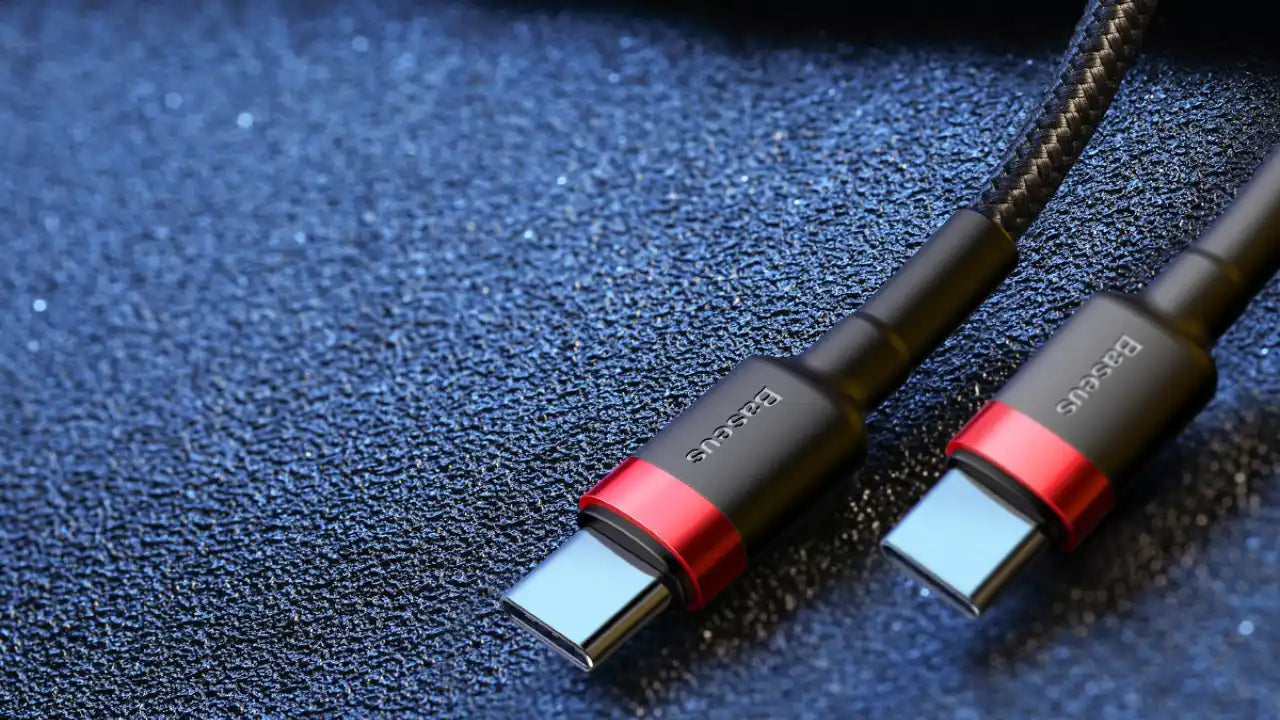
Chances are, you've seen or used a USB-C port especially if you are an Apple user considering this port became available for Apple technology back in 2015. People often ask 'What is USB C?", because they are so used to seeing USB-A ports on multiple marketplaces. The reason for this is that USB-A connections are generally more universal and are often easier to find in some cases.
However, USB-C connections are becoming more popular and they are actually newer in comparison. When you compare the two, USB-C connections are a lot faster when it comes to charging devices, they make data transfer safer, and the support they offer when it comes to data protocols and device speed is unmatched.
Overall, you have to pay attention to the prevalence of USB-C options as well. The prevalence of USB-C is now steadily expanding beyond laptops and smartphones. Currently, monitors, docking stations, and even different gaming consoles are now featuring USB-C ports.
Consider Other Factors for Popularity
They are also becoming popular among companies that are 'remote first' as you will see a lot of these ports in the equipment they send their workers. For companies that use HP thin clients, for example, you may notice that the headsets used and other external devices have c-ports to connect to rather than a universal USB-A port or AUX-style connection.
The primary benefits of USB C cables are their ability to significantly speed up charging and their ability to support multiple devices. This is why the majority of consumers want a smart device that supports this type of cable, to have access to the superchargers made for the device they use. This isn't something that a USB-A cable offers. Basically, the future of smart device charging is USB-C.
The reason for this is mainly because of its advantages for both the consumer and even the environment. USB-C cables are said to reduce e-waste and these cables are now becoming the new standard of charging technology.
What Is USB-A?
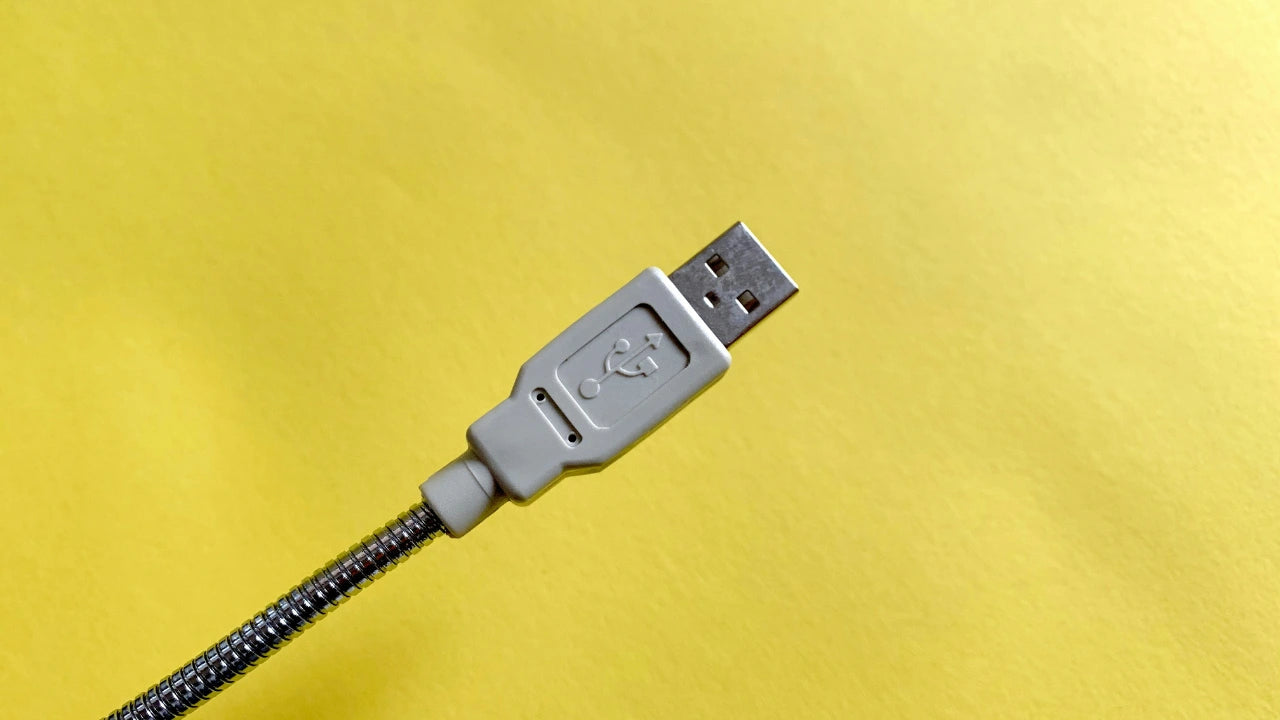
When it comes to different charger cable types, people still ask "What is USB A?" Keep in mind that this cable is known as the more universal option mainly because it's been around longer.
The USB-A cable has been on the market since the 90's and chances are when you're looking for a plug for a device, you associate that thought with a traditional rectangular cable which is the USB-A cord. USB-C models are taking over the market so this is something that is now more associated with older devices.
Or, in a lot of cases, people associate them as 'non-apple' compatible devices. Consumers are usually more familiar with this option and they are very easy to find at almost any store.
With that, you'll notice that its universal design is why it's so popular. Most of the time, anything you get on the market such as a Bluetooth speaker, headphones, or even a Bluetooth karaoke mic, will all have USB-A connections. One of the reasons for this is that USB-C cables are more expensive to implement.
For companies that are making more generic products for everyday use, implementation of a USB-A connection is more feasible. At some point though, USB-A connections are likely to be phased out. The USB-C cable is going to take its place but due to the ease of implementing A-cables, they will still be around although active manufacturing of them may come to a halt.
USB C vs USB A and the Differences
Consumers often ask, "What is USB-A vs USB-C" and are wondering what the actual difference between USB A and C is. The primary difference is the shape of the two. You'll notice that a USB-C cable is reversible but the USB-A cable isn't.
When it comes to USB C vs USB A, this means that regardless of how you insert your C-cord, it will charge your device either way. This isn't possible with an A-cable because it can only fit when plugged in, in a certain direction.
Transfer speeds greatly differ as well and this will mainly depend on the generation of the A-cord being used. For example, a USB 2.0 is good for supporting speeds of up to 480 MBPs. A 3.0 on the other hand can range anywhere up to 5 GBP.
The USB-A cable will often tap out at a certain point in general. That point would be at about 10 GBP. A C-cable can go up to 40.
Keep in mind that many A-cables may have slower transfer speeds, depending on the device. The main difference with this is that the capabilities of an A-cable are more limited than that of a USB-C option.
Also keep in mind that while reversibility is one of the benefits of the USB-C cable, that doesn't mean it's 'universal'. C-cables don't have limitations when it comes to orientation, but you'd still need an adapter if you want to use a USB-C connection with something that isn't compatible.
Considering Additional Differences
You might notice that some laptops, Chromebooks, for example, use a C-port for charging. USB-C cables have the capability to maintain a laptop's battery life. However, USB-A cable does not as it can only handle up to 2.5 watts and 5 volts in the general sense.
Charger Cable Types (5 Different Types)
Consumers often think that USB-C cables are the same but not all of them are. There are a variety of different charger cable types. For example, there USB C to USB C cables can include usb 3.1 Gen 1 and Gen 2 options along with other cable solutions.
While the design may seem the same, the functionality for the difference between USB C and USB A will differ. By that, we mean that their data transfer rates will vary.
Transfer speeds aren't the only thing that will vary. The protocols that can be supported will vary as well. Some USB-C cables could be eMarked or they may not be eMarked. Some may support alternative models while some may not.
Between USB A vs USB C, their capabilities will vary based on the version being used. The same goes for USB A cables.
While it is a more universal option and is a common method of connecting to just about anything, there are different cable versions it supports. The best way to think about the different charger cable types when comparing USB A vs USB C is to consider that each USB type supports a different cable version, and each cable version has a maximum speed capability.
USB 2.0 and 3.0, 3.1
For example, both USB-A and USB-C connections could support 2.0, 3.0, etc. These different versions refer to the generation of the USB standard. A 3.0 or 3.1 Gen is considered to be 'super speed' whereas a USB 2.0 is considered to just be, 'high speed'.
A USB 2.0 is known as one of the more early USB standards and it's commonly associated with USB-A connection cables. When you compare this choice it is a significant improvement over USB 2.0 in terms of speed and performance. This USB option is an improvement and upgrade over the USB 2.0 when it comes to optimal speed and performance.
The main difference you'll notice between the two is the data transfer speed. To put this into perspective, consider how a 3.0 or 3.1 cable version can charge about 10 times faster than a standard 2.0 model. These USB connections are connected to different cable types and aren't the same type of technology.
USB 2.0 A to A Angled Cables
USB 2.0 A to A angled cables are a specific type of usb-a cable. It features a unique design where one or both of the usb-a connectors have an angular or bent type of shape.
Keep in mind that there are a variety of different types of types of charging cables for A-cords. The main quality of this type of specific cable is its angular design. A more standard straight USB-A cable can oftentimes experience stress at the connector points.
This mainly happens when bent sharply or when it's pressed against surfaces. The angled design of these cables helps to reduce this type of stress on the connectors which also enhances their durability rating and the longevity of the cable.
Also, it should be pointed out that something else sets this type of connection apart. A 2.0 USB-A to A angled cable is designed specifically for USB 2.0 data transfer speeds.
The transfer speeds are different than what a 3.0 version would offer and the use cases for these cables may often be different compared to a USB-C option.
USB-C to USB-C Cables
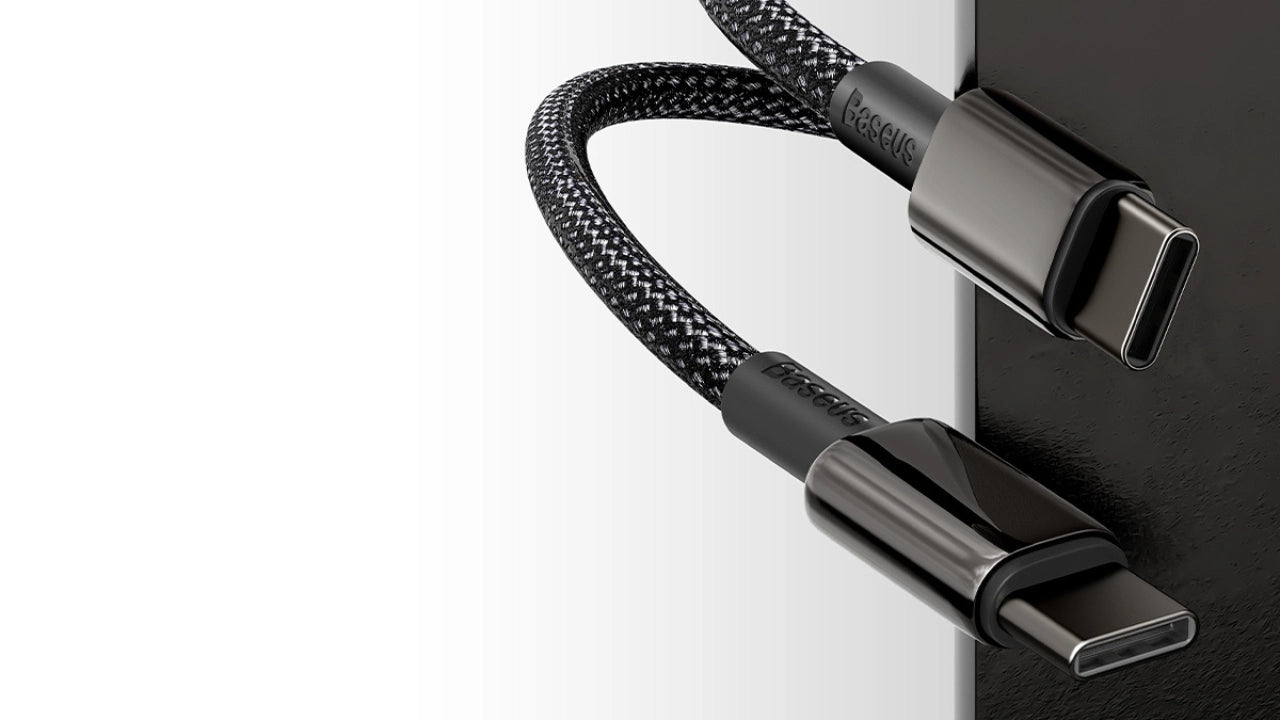
USB-C to USB-C cables are compatible with the latest USB standards. This means that it is capable of supporting the newer version of this technology. This would often include USB 3.1 Gen 1, USB 3.1 Gen 2, and USB 4.
These cables carry both video and audio signals and it's also universal given it's design. This means that you will still have ease of access with this type of cable connection. One of the primary qualities that sets USB-C cables apart is its charging capabilities.
Many of these USB-C to USB-C cables support enhanced 'Power Delivery', which is a type of technology that allows for higher power output. This makes these cables suitable for charging a wide range of devices, from smartphones and laptops or tablets to larger appliances in some cases.
This is also the type of technology that you will notice as connected with a lot of newer smartphone chargers. Superchargers are more streamlined now with cell phone usage. It's something that USB-A cables don't have in common with USB-C options.
Apple products are a good example of this. Different iPhone models, especially those that are newer feature fast-charge technology. This means that the charge takes significantly less time than standard charging options.
This is the main difference between USB and C technology. Some USB-C options for certain iPhone models can often support consumers recharging their iPhone's up to 50% of their battery in just half an hour.
Apple also offers different adapters for their lightning cables. In general, the company will mention that you need an Apple USB-C cable to access this type of fast, efficient, and streamlined charging.
Knowing the Primary Differences
USB-C cables offer a more versatile and future-proof option because this is what newer products are being designed to support. USB-A cables remain relevant in many legacy devices so they will always be around although they will become more phased out.
As technology continues to evolve, it's crucial to stay informed about the latest USB standards and cable types to make the best choices for your overall setup and needs.
With the USB-A option, you will get continuous reliability. With USB-C tech, you can expect reliability, more efficiency, and versatility when using newer products.
Figuring Out What You Need
Chances are, when it comes to USB C vs USB A technology, you might need both. Many people own wireless headphones, different types of tablets, speakers, and other smart technology. USB A and C cables could be appropriate for a variety of different products.
Keep in mind that there are adapters that can make them compatible if they aren't. Overall, what you need will come down to your specific needs and the devices you use. Regardless of what you need, you can access high-quality products when you shop with Baseus.
Check out our new releases to get started.
 United States/English
United States/English



